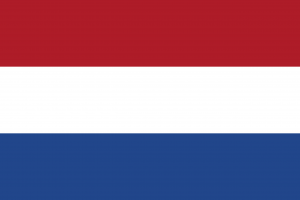Language/Dutch/Grammar/Gender-and-Articles
 Հայերէն
Հայերէն Български език
Български език 官话
官话 官話
官話 Hrvatski jezik
Hrvatski jezik Český jazyk
Český jazyk English
English Suomen kieli
Suomen kieli Français
Français Deutsch
Deutsch עברית
עברית हिन्दी
हिन्दी Magyar
Magyar Bahasa Indonesia
Bahasa Indonesia فارسی
فارسی Italiano
Italiano 日本語
日本語 Қазақ тілі
Қазақ тілі 한국어
한국어 Lietuvių kalba
Lietuvių kalba Νέα Ελληνικά
Νέα Ελληνικά Şimali Azərbaycanlılar
Şimali Azərbaycanlılar Język polski
Język polski Português
Português Limba Română
Limba Română Русский язык
Русский язык Српски
Српски Español
Español العربية القياسية
العربية القياسية Svenska
Svenska Wikang Tagalog
Wikang Tagalog தமிழ்
தமிழ் ภาษาไทย
ภาษาไทย Türkçe
Türkçe Українська мова
Українська мова Urdu
Urdu Tiếng Việt
Tiếng ViệtAs a Dutch language teacher with 20 years of experience, I know that learning the gender of Dutch nouns and how to use definite and indefinite articles is crucial for any beginner who wants to master the language. In this lesson, I will guide you through the basics of gender and articles in Dutch, and provide you with cultural information and interesting facts to help you better understand the language.
After mastering this lesson, these related pages might interest you: How to use “there to be” in Dutch & Plural.
Gender in Dutch Nouns
Unlike English, Dutch has three genders: masculine, feminine, and neuter. However, determining the gender of a noun can be tricky for non-native speakers as there are no strict rules to follow. In general, the gender of a noun can be deduced from the ending letter(s).
Let's take a look at some examples:
| Dutch | Pronunciation | English |
|---|---|---|
| de man | /də 'mɑn/ | the man (masculine) |
| de vrouw | /də 'vrɑu/ | the woman (feminine) |
| het kind | /hət 'kɪnd/ | the child (neuter) |
| de koe | /də 'ku/ | the cow (feminine) |
| het paard | /hət 'paːrt/ | the horse (neuter) |
As you can see, the definite article "de" is used for masculine and feminine nouns, while "het" is used for neuter nouns. Indefinite articles also match the gender of the noun.
In some cases, the gender of a noun is not evident from its ending, and memorization is required. For example, "hoofd" (head) is a neuter noun, while "meid" (girl) is a feminine noun.
Definite and Indefinite Articles
In Dutch, there are two types of articles: definite and indefinite. As their names suggest, definite articles refer to something specific, while indefinite articles refer to something unspecific or unknown.
Definite Articles
The definite articles in Dutch are "de" for masculine and feminine nouns, and "het" for neuter nouns. The plural definite article is always "de".
Examples:
- de man – the man
- de vrouw – the woman
- het kind – the child
- de mannen – the men
- de vrouwen – the women
- de kinderen – the children
Indefinite Articles
The indefinite articles in Dutch are "een" for masculine and feminine nouns, and "een" or "een beetje" for neuter nouns. "Een" means "a/an" in English.
Examples:
- een man – a man
- een vrouw – a woman
- een kind – a child
- een paard – a horse
- een beetje water – a little water
Note that the indefinite article for neuter nouns can also be "een beetje", which means "a little". This is used to indicate a small amount of something.
Practice Exercise
Determine the gender of the following nouns, and use the appropriate article:
- de auto (the car)
- het huis (the house)
- een boek (a book)
- de hond (the dog)
- een fiets (a bicycle)
Conclusion
In this lesson, you have learned the gender of Dutch nouns and how to use definite and indefinite articles. Remember that practice is key to mastering any language, so make sure to apply what you have learned by using these concepts in your everyday language learning. Next up in the course is "Plural and Diminutives". Stay tuned!
Sources
- Gender in Dutch grammar - Wikipedia
- Discover how to learn the articles of Dutch nouns
- The acquisition of grammatical gender in Dutch - Elma Blom ...
Impressive work on finishing this lesson! Explore these additional pages to enhance your understanding: Ordinal Numbers in Dutch & Inclusive Case in Dutch.
Other Lessons
- Reflexive and Possessive Pronouns
- Interrogative words in Dutch
- How to use “must” in Dutch
- Nouns
- Greetings in Dutch
- Negation
- The Locative Case in Dutch
- Conditional Mood
- How to use “to speak” in Dutch
- Plurals

